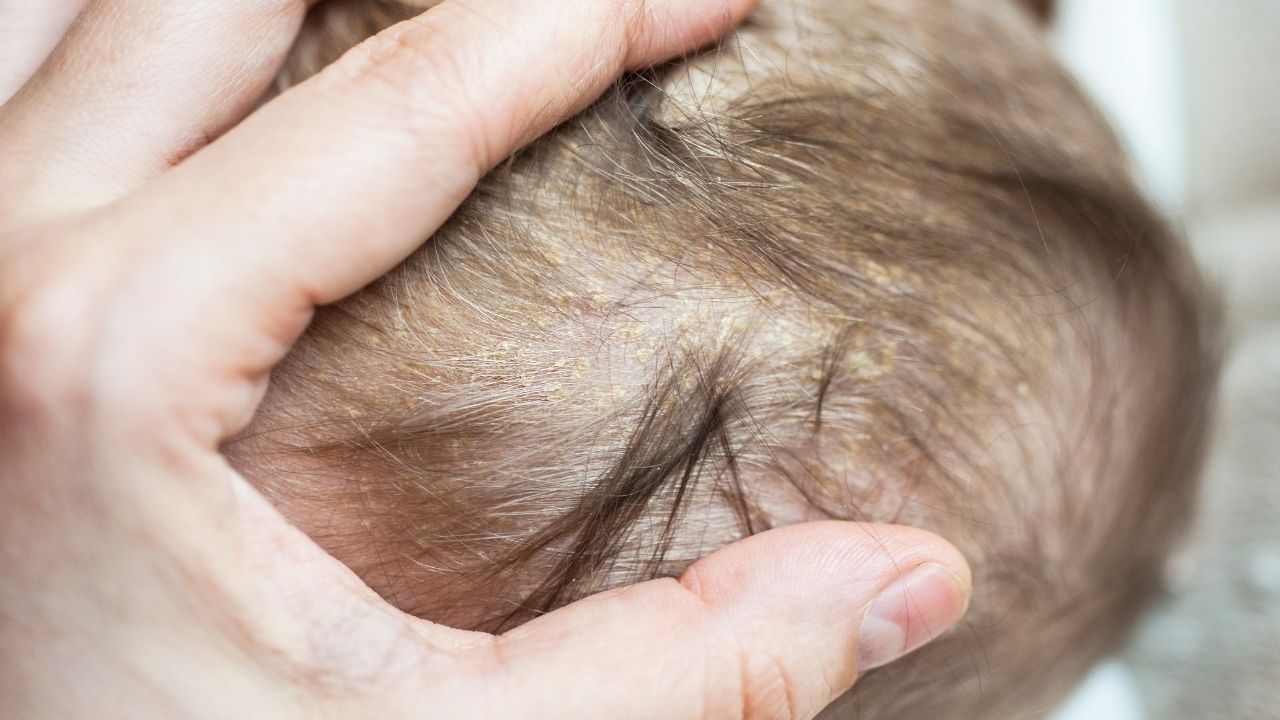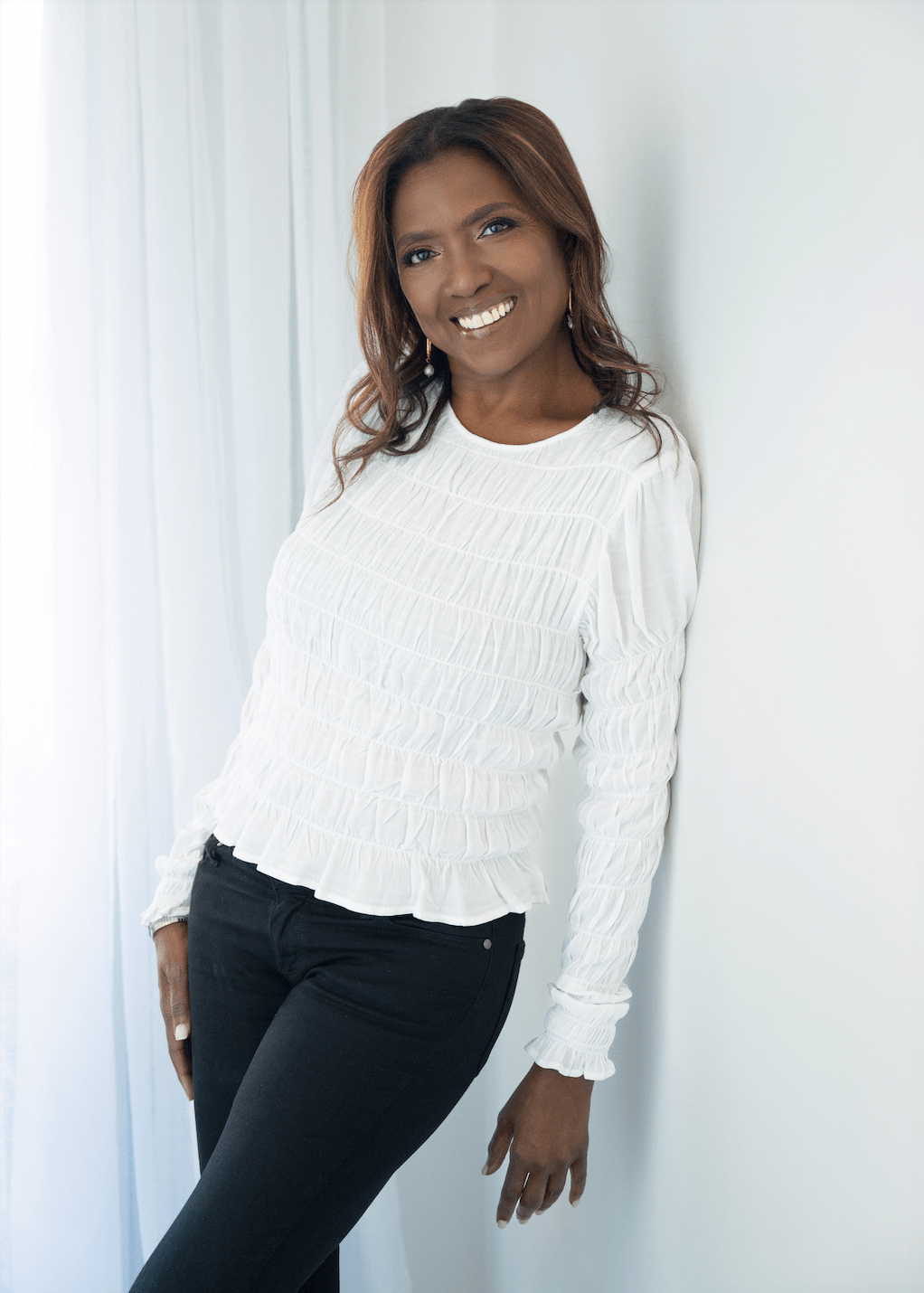Lifestyle
Do These 3 Things to Get Rid of Cradle Cap

People warn us about a lot of things when they see that you’re pregnant or when your newborn baby is swaddled in your arms. You’ve probably heard the same warnings over and over again – “enjoy your sleep while you can get it,” “take naps when the baby naps,” and the warnings that the terrible twos are nothing compared to the horrible 3’s.
But there are many things that they never tell you about cradle cap when you’re first bringing home your new little bundle of joy. It seems like there are lots of things they don’t warn you about.
Most often, it begins when they are between two and six weeks old. And most common in babies under three months.
The first time you notice the yellow flakes, it’s certainly a bit concerning. You attempt to scratch off the crust with your fingernails gently, and you pass it off as buildup from baby shampoo or just some dry skin, so you add some moisturizer and go about your day.
Only to find that it comes back again the very next day and the day after that. Your mind, of course, goes directly to being concerned. You read the internet and fear that it’s a rash or that it could be eczema and have to do with their diet or give you a reason to try dairy free formula.
Not understanding what this is can be scary, but rest assured that cradle cap is neither painful nor is it itchy to your newborn. In fact, your baby has no idea at all that it’s there.
That’s great news. But while it’s not affecting the way they feel, you’ll want to get control over those scaly patches of yellow crusts on the scalp because it can quickly become out of control.
But first, let’s take a look at what causes cradle cap in the first place.
While they aren’t 100% certain of the exact cause, it’s believed to be the result of hormones that were passed through the placenta just before birth. These hormones cause overactive oil glands. As your baby’s dead skin cells fall off, which is normal, the excessive oil that their little bodies are producing is trapping the dead skin, and it’s forming the crust on the scalp.
Most often, cradle cap is confined to their head, but there are some instances where you’ll notice it on their eyebrows as well.
While this is something that will eventually go away on its own, there are some things that you can do to help speed the process up a bit.
Follow these simple steps, and you’ll begin to see a difference in just a few days,
1. Apply oil to the scalp
Baby oil is going to be the best option. However, mineral oil and coconut oil are good options as well. Begin by massaging just a few drops of baby oil on your baby’s scalp 15 minutes before bath time. This will help to soften the scales.
You should avoid using olive oil or anything containing essential oils on your baby.
2. Shampoo regularly
You’ll want to use a really good baby shampoo such as organic baby shampoo. It has no fragrance and is gentle enough to be used daily. By shampooing your baby’s scalp daily will not only treat the cradle cap, but you’ll also be preventing it by reducing the oils.
3. Brush your baby’s scalp
About 30 minutes after the bath, you’ll want to take time to remove the build-up. It’s going to be extremely tempting to pick at it, but do not do that. It will make the condition worse.
You’ll want to gently brush your baby’s scalp with a baby brush or comb. Take your time doing this and enjoy talking to your baby.
From the moment we bring them home, the worrying begins. We watch them as they sleep to make sure they are breathing. We fear they’re not getting enough breast milk or drinking enough formula, and we worry they aren’t hitting their milestones on time.
We worry because we love them. It’s our job as their parent to protect them and teach them how to brush their teeth to prevent cavities, how to ride a bike, how to respect people, and be kind. The list of things goes on and on.
You’re doing great, Mom! There’s nothing better in life than being a parent and watching our babies grow into beautiful people.
Lifestyle
Wanda Knight on Blending Culture, Style, and Leadership Through Travel

The best lessons in leadership do not always come from a classroom or a boardroom. Sometimes they come from a crowded market in a foreign city, a train ride through unfamiliar landscapes, or a quiet conversation with someone whose life looks very different from your own.
Wanda Knight has built her career in enterprise sales and leadership for more than three decades, working with some of the world’s largest companies and guiding teams through constant change. But ask her what shaped her most, and she will point not just to her professional milestones but to the way travel has expanded her perspective. With 38 countries visited and more on the horizon, her worldview has been formed as much by her passport as by her resume.
Travel entered her life early. Her parents valued exploration, and before she began college, she had already lived in Italy. That experience, stepping into a different culture at such a young age, left a lasting impression. It showed her that the world was much bigger than the environment she grew up in and that adaptability was not just useful, it was necessary. Those early lessons of curiosity and openness would later shape the way she led in business.
Sales, at its core, is about connection. Numbers matter, but relationships determine long-term success. Wanda’s time abroad taught her how to connect across differences. Navigating unfamiliar places and adjusting to environments that operated on different expectations gave her the patience and awareness to understand people first, and business second. That approach carried over into leadership, where she built a reputation for giving her teams the space to take ownership while standing firmly behind them when it mattered most.
The link between travel and leadership becomes even clearer in moments of challenge. Unfamiliar settings require flexibility, quick decision-making, and the ability to stay calm under pressure. The same skills are critical in enterprise sales, where strategies shift quickly and no deal is ever guaranteed. Knight learned that success comes from being willing to step into the unknown, whether that means exploring a new country or taking on a leadership role she had not originally planned to pursue.
Her travels have also influenced her eye for style and her creative pursuits. Fashion, for Wanda, is more than clothing; it is a reflection of culture, history, and identity. Experiencing how different communities express themselves, from the craftsmanship of Italian textiles to the energy of street style in cities around the world, has deepened her appreciation for aesthetics as a form of storytelling. Rather than keeping her professional and personal worlds separate, she has learned to blend them, carrying the discipline and strategy of her sales career into her creative interests and vice versa.
None of this has been about starting over. It has been about adding layers, expanding her perspective without erasing the experiences that came before. Wanda’s story is not one of leaving a career behind but of integrating all the parts of who she is: a leader shaped by high-stakes business, a traveler shaped by global culture, and a creative voice learning to merge both worlds.
What stands out most is how she continues to approach both leadership and life with the same curiosity that first took her beyond her comfort zone. Each new country is an opportunity to learn, just as each new role has been a chance to grow. For those looking at her path, the lesson is clear: leadership is not about staying in one lane; it is about collecting experiences that teach you how to see, how to adapt, and how to connect.
As she looks to the future, Wanda Knight’s compass still points outward. She will keep adding stamps to her passport, finding inspiration in new cultures, and carrying those insights back into the rooms where strategy is shaped and decisions are made. Her legacy will not be measured only by deals closed or positions held but by the perspective she brought, and the way she showed that leading with a global view can change the story for everyone around you.
-

 Tech5 years ago
Tech5 years agoEffuel Reviews (2021) – Effuel ECO OBD2 Saves Fuel, and Reduce Gas Cost? Effuel Customer Reviews
-

 Tech6 years ago
Tech6 years agoBosch Power Tools India Launches ‘Cordless Matlab Bosch’ Campaign to Demonstrate the Power of Cordless
-

 Lifestyle6 years ago
Lifestyle6 years agoCatholic Cases App brings Church’s Moral Teachings to Androids and iPhones
-

 Lifestyle5 years ago
Lifestyle5 years agoEast Side Hype x Billionaire Boys Club. Hottest New Streetwear Releases in Utah.
-

 Tech7 years ago
Tech7 years agoCloud Buyers & Investors to Profit in the Future
-

 Lifestyle5 years ago
Lifestyle5 years agoThe Midas of Cosmetic Dermatology: Dr. Simon Ourian
-

 Health7 years ago
Health7 years agoCBDistillery Review: Is it a scam?
-

 Entertainment6 years ago
Entertainment6 years agoAvengers Endgame now Available on 123Movies for Download & Streaming for Free
